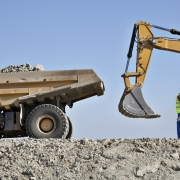Safety Boot Codes Explained
What Are Safety Boot Codes?
When buying safety boots there can be a lot to consider. Looks are important but you can’t disregard the critical factors in place of beauty! Yes, it’s important and we want our clients to be happy in what they wear but not at the expense of safety – that’s for sure! For some people that’s it, job done. “The manufacturers description and “codes” indicated they were safety boots, so I’m happy with the appearance and they fit!” Wrong!
Understanding your footwear is critical. There are many different codes and abbreviations associated with a pair of safety boots or shoes to consider that will give you an indication of the various levels of safety they will provide.
What is EN ISO 20345:2011?
EN ISO 20345:2011 will pop up on a lot of product descriptions for safety footwear. It specifies basic and additional (or optional) requirements for safety footwear that are used for general purpose. All safety boots must be manufactured and certified under this standard. That’s non negotiable.
Safety Boot Rating
There are several ratings for safety footwear and they are generally indicated by a two-letter abbreviation. They all start with the letter S;
• SB (Safety Basic) = This is the basic safety standard for footwear. These will have toe protection against a 200-joule impact, and is resistant to fuel oil and has energy absorption.
• S1 = As well as the basic toe protection, S1 will ensure that footwear has anti-static protection, is resistant to fuel oil and has energy absorption in the heel.
• S2 = These have all the same protection as S1, plus the added protection of preventing water penetration and absorption of the uppers.
• S3 = This has all the same protection as S2 level, plus midsole penetration resistance (steel or anti puncture material).
• S4 = The same level of protection offered by S1 but with a moulded polymer/rubber upper (e.g. Wellington Boots) making them fully waterproof.
• S5 = The same features as S4 footwear with the additional benefit of midsole penetration resistance
Safety Boot Code Abbreviations;
Now this is where it can get confusing, sometimes a manufacturer will add on an additional letter. For example, a common one is SB-P. This is indicating that the boot has an optional feature. So, in this example you get the basic protection of SB plus you get the addition of P. The P stands for Penetration Resistance. There are many abbreviations that can be added onto a rating;
• P – Penetration resistance
• C – Conductive
• A – Antistatic
• I – Electricity insulating footwear
• WR – Water Resistance
• M – Metatarsal Protection
• AN – Ankle Protection
• CR – Cut Resistant Upper
• WRU – Water Penetration and Water Absorption Upper
• HRO – Outsole Resistance to Hot Contact
What Is Anti-Slip footwear?
Anti-Slip footwear (slip resistance footwear) is becoming more and more requested on all industrial sites… building sites, hospitals, food manufacturing plants and a wide host of other settings. And for good reason slips, trips and falls make up an astonishing 43% of all serious work-related injuries. Footwear that as an anti-slip rating will be added onto the safety boot rating. For example, you may see the following three letters : SRC. These are the three codes used for slip resistance testing.
• SRA – tested on ceramic tiles saturated with soap solution.
• SRB – tested on smooth stainless steel with glycerol.
• SRC – tested under both the above conditions. (Passing both SRA & SRB)
4 Top Tips when buying safety boots?
1. Assess where you’re working: This is crucial, you’re not going to need S5 waterproof wellies if most of your day is spent in an office. On the flip side it would be silly to get just the basic SB if you’re a contractor going to different types of building sites daily where hazards can range from rusty old nails to slippery underfoot conditions. Take the time to consider all the hazards you come across on a regular basis and purchase accordingly.
2. Fit and comfort: Take the time to make sure that your new boots are a snug fit and feel comfortable. Many of you will be wearing these for 10-12 or more. See that there are no manufacturers faults on the inner that may rub against your skin. Make sure that they fit well, there’s no point buying a size 8 wide fit if you have narrow feet, maybe try a 7 or look at toe cap width. Incorrectly fitted boots can lead to trips.
3. Bootcare: Look after your safety boots, let them air dry at room temp if they have become wet. Don’t dry near a fire place as this can damage the leather uppers. Make sure you lace up and loosen between use. If your boots get muddy make sure you clean them with a suitable brush. No pair of boots is going to last forever but with care and attention you can get the most out of yours! (5 years or more easily with regular polishing).
4. Price doesn’t necessarily mean “more safe”: The price of safety boots can vary from R275 to the R1500 per pair mark. Don’t automatically think that price gives you the best levels of protection. This is not always the case for a higher priced safety boot, you may be paying extra for unnecessary features. Buy industry specific (such as construction safety boots or mining safety boots). Talk to the professionals in safety footwear.
—
For a chat about your work forces safety boot requirements please give us a call on +27 11 892 8030 / 8031 / 8032 or drop an email to organise a call info@profitfootwear.co.za.



